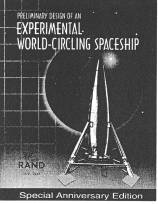
On 24 February and 27 March 1954, President Dwight D. Eisenhower met with his National Security Council (NSC) and then with the civilian scientists of the Science Advisory Committee in the Office of Defense Mobilization. With the memory of Pearl Harbor still fresh in his mind, Eisenhower related his concern regarding the potential for a surprise nuclear attack on the United States.[1] Stressing the need for avoiding or containing such aggression, President Eisenhower was resolved to ensurethat the United States would never again be vulnerable to a direct sneak attack.[2] He challenged the US scientific community to address hisconcern. In response, scientists created the Surprise Attack Panel-later known as the Technological Capabilities Panel (TCP)-chaired by MIT president James R. Killian.[3] The panel issued its final report, “Meeting the Threat of Surprise Attack,” on 14 February 1955. Among other things, the report recommended that the United States develop satellites to operate at high altitudes. These satellites would establish as a principle of international law the freedom of passage for any subsequent military satellites.[4] The panel had created a blueprint for Eisenhower as to how the US should proceed regarding resolution of the freedom of passage issue.
Given a lack of intelligence regarding the Union of Soviet Socialist Republics (USSR) and given that the United States was not able to implement the reconnaissance satellite system envisioned by the TCP,
- ↑ Ibid. Eisenhower was not the first United States official to express concern about a nuclear Pearl Harbor. Gen Henry H. “Hap” Arnold, commanding general of the AAF, had expressed the same concern nearly 10 years earlier. See Spires, 30.
- ↑ While Eisenhower may have feared a nuclear surprise attack, the primary focus of the US ballistic missile program, even under Eisenhower, was never the launching of a space satellite for intelligence purposes, but rather the creation of a system to deliver a hydrogen warhead on target anywhere on earth.
- ↑ The Surprise Attack Panel's membership was drawn from the US scientific and engineering communities, including many who had served on the Beacon Hill Study Group. During the time the TCP/Surprise Attack Panel was meeting, the Air Force continued to move forward with a program to develop a reconnaissance satellite system. On 27 November 1954, the Air Force's Research and Development Command had made the decision to pursue a satellite system and on 16 March 1955 had completed a formal statement of objectives. Hall, “Origins,” 20. Also see “USAF Space Programs, 1945-1962” (Maxwell AFB, Ala.: USAF Historical Division Liaison Office, undated), 9-10.
- ↑ Hall, “Origins,” 19-20
